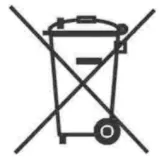
Testing for REACH Restricted Substances in Electronics
The EU reach regulation, formally known as the "Registration, Evaluation, Authorization, and Restriction of CheMICals," was officially implemented in the EU on June 1, 2007. Virtually all products placed on the EU market fall under the scope of this regULation. According to Article 67(1) of the REACH Regulation: "Substances, mixtures, or articles containing restricted substances listed in Annex XVII may not be placed on the market unless they comply with the restrictions specified in Annex XVII." Therefore, enterprises must not only monitor the content of SVHC (Substances of Very High Concern) in their products but also ensure compliance with the specific requirements of Annex XVII based on the product's application.

If your company has not yet determined the compliance of its products with Annex XVII of the REACH regulation, BTI can provide testing services for products and raw materials in relation to Annex XVII. China's JJR Laboratory supports your efforts to confidently meet the requirements of the REACH regulation.
Testing for REACH Restricted Substances in Electronics and Electrical Products
Applicable Product Scope
- Electronics, electrical products, and their raw materials.
Examples of High-Risk Projects in Electronics and Electrical Products
1. Asbestos Fibers
- Key Restriction: Prohibited in mixtures and articles intentionally.
- Common Application: Used in insulation materials.
2. Organotin Compounds
- Key Restriction:
- Tri-substituted organotin compounds: Prohibited in any article or its components exceeding 0.1% by weight (as tin) since July 1, 2010.
- Dibutyltin compounds (DBT): Restricted to ≤0.1% by weight (as tin) in mixtures and articles (or components) since January 1, 2012.
- Dioctyltin compounds (DOT): Restricted to ≤0.1% by weight (as tin) in articles (or components) since January 1, 2012.
- Common Application: Used as heat stabilizers, catalysts, or pesticides in textiles, wood, leather, coatings, etc.
3. Nickel and Its Compounds
- Key Restriction:
- Accessories piercing the human body must have a nickel release rate of less than 0.2 μg/cm²/week.
- Products in direct and prolonged contact with skin must have a nickel release rate not exceeding 0.5 μg/cm²/week.
- Common Application: Used in electroplating and alloys.
4. Polycyclic Aromatic Hydrocarbons (PAHs)
- Key Restriction:
- Under normal or foreseeable conditions of use, any of the 8 specified PAHs in plastic or rubber parts directly and repeatedly contacting skin or mouth must not exceed 1 mg/kg.
- For toys and childcare articles under similar conditions, the limit is 0.5 mg/kg.
- Common Application: Found in plastics and rubber.
5. Phthalates
- Key Restriction:
- From July 7, 2020, the sum concentration of DEHP, DBP, BBP, and DIBP in plasticized materials must be less than 0.1%.
- For toys and childcare articles that can be mouthed, the combined concentration of DINP, DIDP, and DNOP must not exceed 0.1%.
- Common Application: Used as plasticizers in plastic materials.
6. Dimethyl Fumarate (DMF)
- Key Restriction: The content of DMF in articles and their components must not exceed 0.1 mg/kg.
- Common Application: Used as anti-mold agents.
Solutions
- Testing for restricted substances in the REACH Annex XVII list
- Testing for SVHC substances
- Preparation of Safety Data Sheets (SDS) for chemicals
- Training and consulting services on regulations and enterprise compliance
Email:hello@jjrlab.com
Write your message here and send it to us
 WEEE Registration for Waste Electrical &Electr
WEEE Registration for Waste Electrical &Electr
 MSDS Chemical Safety Testing
MSDS Chemical Safety Testing
 What Are the Differences Between UK REACH and EU R
What Are the Differences Between UK REACH and EU R
 E-Cigarette GB 41700 Compliance Testing
E-Cigarette GB 41700 Compliance Testing
 What Are the Testing Items of California Propositi
What Are the Testing Items of California Propositi
 E-Cigarette EU TPD Testing
E-Cigarette EU TPD Testing
 Testing Certification for E-cigarettes Exported to
Testing Certification for E-cigarettes Exported to
 What is Amazon US CPC Certification?
What is Amazon US CPC Certification?
Leave us a message
24-hour online customer service at any time to respond, so that you worry!




